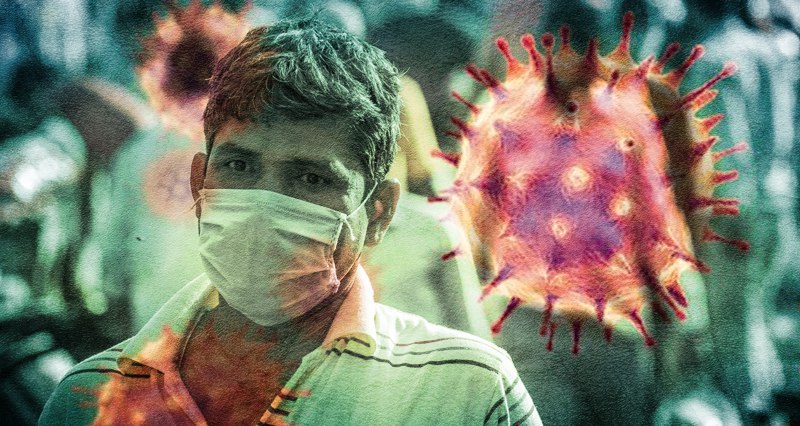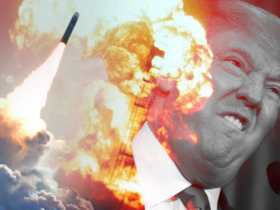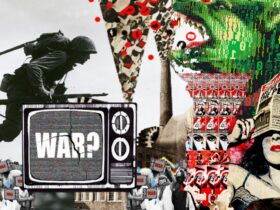By Yang Chen
If someone had predicted that face masks and ventilators would become critically strategic supplies, and even an item in an arms race just last year, it would have seemed ridiculous. However, the COVID-19 pandemic has made this a reality. However, at the same time, the hysteria around the face masks raises a few questions: Can wearing a mask effectively stop the transmission of coronavirus? Will wearing a mask cause misunderstanding and discrimination from other people? Should I wear a normal mask or a medical mask if necessary? What if there are not enough masks on the market? If no one else wears it, do I need to? Could I be forced to wear a mask against my will? To wear or not to wear: that is the main question..
Problem 1: face masks as a historical problem
In 1861, French biologist, microbiologist and chemist Louis Pasteur proved the presence of bacteria in the air, which made more people pay attention to the design of modern masks. In 1897, Johann von Mikulicz Radecki described a surgical mask composed of one layer of gauze. That same year it was discovered that ordinary conversation could disseminate bacteria-laden droplets from the nose and mouth, substantiating the need for an effective face mask. A French doctor created a mask made of six layers of gauze and sewed it on the collar of a surgical gown in 1899. The doctor only needed to flip the collar up when using it. It gradually evolved into a form that could be freely tied and hung on the ears with a looped strap, thus giving birth to the modern mask.
In 1918, when a pandemic broke out and infected 20 million people worldwide, face masks began to arouse the attention of the public. But after the invention of antibiotics in the 1940s, this was widely accepted as an effective way to control infections, and the demand for face masks was reduced. Since then, the attitude of Western countries towards face masks has changed, but it has been increasingly accepted in Asia. In China, the outbreak of SARS in 2003 made face masks a part of public life. In Japan, wearing a face mask in public has become a habit, and even part of popular culture.
Problem 2: the face mask as a scientific problem
Even in scientific circles, there have always been two diametrically opposed factions about whether the public should wear face masks: one group does not recommend wearing masks, and thinks they are useless or even harmful; the other group urges the public to use them. The reasons for recommending against it are clear: at present, there is not enough data on the effectiveness of masks in preventing the coronavirus.
Usually, when we made a decision on medical issues, a complete scientific argument is necessary. But in some circumstances, especially for an unknown disease or virus like the one we are facing today, decisions have to be made without sufficient data, and then adjusted according to new data and information as it comes in. At this time, we have to rely on the existing knowledge, personal experience, risk perception and risk management. It appears that at least the masks are not harmful, and it’s likely better to be safe than sorry in this case.
Therefore, we are seeing that different countries are adopting different policies towards the mask. In some European countries such as Austria, the Czech Republic and Slovakia, wearing a face mask has become a compulsory measure. In China, which has experience in the matter after the SARS epidemic, and South Korea, which experienced MERS, wearing a face mask has become common sense.
Psychological warfare misses its mark: China is winning the Covid-19 media war
Problem 3: the face mask as a problem for governance
When the pandemic broke out, there was a significant panic over the demand for masks in China. Due to the insufficient supply, the government adopted a purchase quota with a controlled price. It was illegal to raise prices arbitrarily. Even so, it is difficult to find one mask in clinics, hospitals, and shopping websites. Therefore, when the Shanghai Government issued notification that citizens could buy masks at pharmacies, a large number of people queued up the next day, which had the negative effect of gathering people together in crowds. A joke circulated describing how a person wearing a face mask went out to buy five more, but came home with zero. Soon, the government announced that citizens could make appointments with the neighborhood community to get masks so as not to leave home.
In the United States, it seems to be another case. On March 31, the US Centers for Disease Control and Prevention (CDC) issued a new guideline, saying that “cloth face coverings are recommended are not surgical masks or N-95 respirators. Those are critical supplies that must continue to be reserved for healthcare workers and other medical first responders, as recommended by current CDC guidance.” After reading this, we cannot help but ask, if the masks are so critical for medical personnel, how are they not beneficial for ordinary people?
Problem 4: the face mask as a problem of production.
To be honest, simple DIY masks are not safe or sufficient. As it turns out, China is the world’s largest mask manufacturing and exporting country, with annual output accounting for about 50% of the world. According to the statistics, China’s face mask production capacity was 20 million per day and the annual output of masks exceeded 5 billion last year.
During the pandemic, in order to meet the demand of the domestic market and the increasing exports, more than 30 provinces, autonomous regions, and municipalities across the country successively added new mask production lines. Many Chinese companies worked day and night to produce masks. Because of this, as of April 5, Chinese daily production capacity of face masks has reached 200 million. From March 1 to April 4, the total export of masks was about 386 million.This will further alleviate the contradiction between global mask supply and demand.
Problem 5: the face mask as a social problem
Although wearing a mask had become a part of Chinese life after the SARS in 2003, they have never been so popular as they are today. Before it was only during winter or in places with heavy pollution that masks were worn. However, the West seems to be reluctant to wear a mask because of the social connotations. First, many westerners believe that masks are worn by the sick, not by the normal. Second, many countries have introduced the “niqab ban” or the “mask ban”, such as France, Germany, the Netherlands, etc., stipulating that no materials can be used to cover faces in public so as to prevent certain extreme religious forces and criminal gangs. Third, in the United States, some African-Americans are reluctant to wear masks, worrying that just shopping in the supermarket with them could lead to them being mistaken for members of a violent gang as a result of rampant racism in the country, causing people to call the police or worse. Therefore, they face a difficult dilemma: risk infection or risk calling too much attention to themselves.
Problem 6: the face mask as a political problem
Despite the masks being small and cheap to produce, they have proven they are capable of arousing political debate in numerous countries. For example, on April 28, US Vice President Mike Pence visited a clinic in Minnesota. Everyone around him was wearing a mask, including accompanying officials, reporters, and patients in hospital beds, but Pence was not. Did the officer forget to remind him to wear a mask? Or did he not realize that he should wear a mask?
In China we face the same situation. When the COVID-19 pandemic had just broken out, some local officials did not wear masks and some wore the masks in the wrong way at press conferences, which was met with public dissatisfaction. It is understandable that the leaders of a country need to set a good example, and many didn’t. Whether or not they want to, if leaders value the safety of the public they need to wear a mask. Given the danger of the pandemic, refusing to wear a mask is not a sign of bravery, only ineptitude and irresponsibility.
Problem 7: the face mask as a diplomatic problem
Recently, some western media sources and politicians have accused China of “Face Mask Diplomacy”. They criticized China for allegedly donating the masks as a propaganda measure, trying to showcase the advantages of China’s political system and compete for geopolitical influence. In fact, China itself received a lot of donations when the epidemic broke out, many countries and organizations donating materials and money to help Beijing in its time of need. China is a country which knows how to properly reciprocate kind efforts and show gratitude. Having basically taken control of the pandemic, China is now ready to lend a helping hand to other countries which have begun to suffer. On the other hand, if China did not help out, politicians would accuse them of being selfish or ruthless. Then again, for many of these politicians, China is always wrong, no matter what it does. There is a Chinese saying that “Loudness is not necessarily persuasive and justice naturally inhabits man’s heart.” I think the best strategy is to ignore these politicians and continue to do the right thing, which is exporting face masks to countries in dire need.
Problem 8: the face mask as a strategic problem
Who could have imagined that face masks would have become strategic materials related to the safety of all countries in the world? Now that it is clear to everyone that they nonetheless are, we can predict that there will be a post-pandemic trend of countries requiring companies to withdraw from overseas production for national security reasons, and the supply chain of face masks and ventilators will be among the first affected. In other words, after the pandemic, each country will try to control its own industrial supply chain to protect themselves, returning to the era of economic sovereignty. Liberal globalism will undoubtedly face serious challenges in the near future.
The Hungarian poet Sandor Petofi wrote a poem entitled “Liberty and Love”:
“Liberty and love.
These two I must have.
For my love I’ll sacrifice
My life.
For liberty I’ll sacrifice
My love.”
In the face of freedom, life and love can be abandoned; this is an individual’s choice. But the coronavirus is dangerous not just for an individual, but for all human beings. One person’s choice may threaten the lives of others. In this case, we should choose the responsible option.
By Yang Chen
Department of History, Shanghai University
Yang Chen is Assistant Professor in the Department of History of Shanghai University’s College of Liberal Arts and Executive Director of the Center for Turkish Studies at Shanghai University. He has published two books about Turkey, and several papers in the World Religious Culture, West Asia and Africa, Arab World Research, China Social Science Today and other journals. His main areas of research are Middle East Studies and Turkish Studies

















Leave a Reply